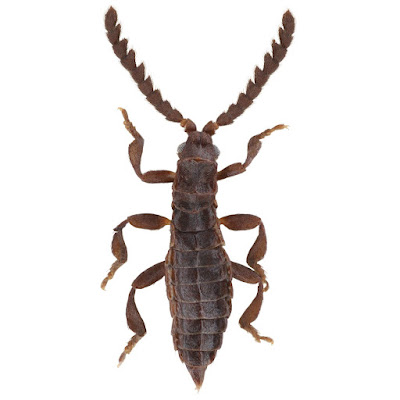 |
| Xenomorphon baranowskii Ferreira, Barbosa, Bocakova & Solodovnikov, 2023 |
Abstract
Insects are one of the few groups of animals that developed the ability of active flight. Such mobility allowed the group to successfully explore and thrive in nearly all kinds of ecological niches. At the same time, during the evolutionary history of insects, due to high costs of wing development, flight was lost independently in many groups. In beetles, the reduction or complete loss of hind wings has been reported in multiple lineages, especially in several extreme paedomorphic and larviform females, mainly in Elateroidea, in which not only the hind wings but also the elytra are lost. However, the complete absence of elytra in adult males was hitherto unknown, despite nearly half a million described species in Coleoptera. In this study, we report the discovery of Xenomorphon baranowskii gen. et sp. nov., the first completely anelytrous and wingless adult male beetle, belonging to the family Lycidae (Coleoptera: Elateroidea). Xenomorphon baranowskii is illustrated, described, and provisionally placed in Calopterini, based on our morphology-based phylogenetic analyses. We discuss the possible scenarios that could lead to such a rare event, when a beetle loses its elytra, and its evolutionary consequences.
Keywords: aptery, brachyptery, high elevation, neoteny, paedomorphosis
Vinicius S. Ferreira, Felipe Francisco Barbosa, Milada Bocakova and Alexey Solodovnikov. 2023. An Extraordinary Case of Elytra Loss in Coleoptera (Elateroidea: Lycidae): Discovery and Placement of the First anelytrous Adult Male Beetle. Zoological Journal of the Linnean Society. zlad026. DOI: 10.1093/zoolinnean/zlad026

